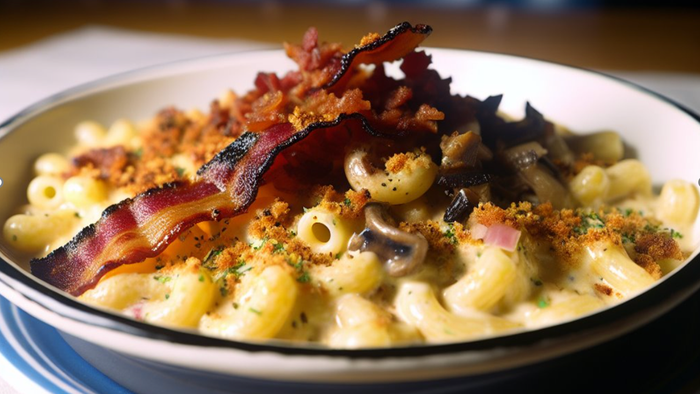Catersource State of the Industry 2024, Part 7Catersource State of the Industry 2024, Part 7
Inclusive business; Turning the page
February 11, 2025
.png?width=1280&auto=webp&quality=95&format=jpg&disable=upscale)
Editor's Note: This is part 7 in our State of the Industry 2024 series. Check out Part 1, Part 2, Part 3, Part 4, Part 5, Part 6.
In today’s diverse society, catering businesses face an evolving landscape that demands more than just excellent food and service. As client expectations shift toward inclusivity, caterers have a unique opportunity to enhance their offerings and build stronger connections with their communities. Embracing inclusivity not only fosters a welcoming environment for all clients but also positions caterers for success in a competitive market.
Inclusivity in catering means creating an environment where everyone feels valued and catered to—literally. With dietary restrictions on the rise, including allergies, veganism, and gluten intolerance, it's crucial for caterers to recognize and accommodate these needs.

These chicken meatballs are not only Certified Gluten-Free, but they are also free of the USDA Big 9 Allergens including soy, wheat, and dairy. They’re also free of fillers, binders, and breadcrumbs, making them the perfect option for catered events where guests have varying dietary restrictions. Photo courtesy Jones Dairy Farm
To put this into perspective, Sebastien Centner (Eatertainment Events & Catering) says that 75% of the menus being requested are predominantly gluten-free, dairy-free, or vegan.
“Inclusivity has become more than just a box to tick,” adds Centner, “it’s woven into how we plan and execute every event.”
To put it more bluntly, dietary restrictions are quite literally a matter of life or death.
Beyond dietary concerns, inclusivity extends to cultural representation. Events celebrating diverse traditions and backgrounds provide a platform for caterers to showcase a variety of cuisines (such as Kosher for example). Engaging with different cultures not only enriches the menu but also demonstrates respect and appreciation for diverse backgrounds, creating memorable experiences for guests.
Additionally, caterers and planners are now focusing on making events physically accessible and welcoming to guests of all backgrounds. This means ensuring that events are easy to access and engage with for individuals of varying abilities. As the topic of event accessibility grows, it’s time to take inventory of your practices and make sure that you’re providing event services that are indeed accessible to all of your potential clients and guests.
There are three main types of accessibility: physical, sensory, and cognitive accessibility, according to an article on accessibility that appeared in the fall issue of Special Events magazine.
One area of accessibility that has been gaining a lot of attention this year relates to cognitive accessibility, which accounts for different types of neural information processing. This can look like providing clear information and communication, language translation, and various accommodations for neurodivergent conditions and mental health conditions such as anxiety, depression, or PTSD.
“Basically, it’s the idea that everybody interacts and experiences the world around them in a different way, and there’s really no one right way or wrong way,” said David Merrell (AOO Events) during Catersource + The Special Event 2024. “So, a neurodivergent person would be someone who has ADHD, or OCD, or autism, or dyslexia—I would venture to say in this room, there are people that have certain variations or certain degrees of that.”
Inclusivity in catering is more than a trend; it’s a necessary approach that aligns with the values of today’s consumers. By embracing diverse dietary needs, fostering cultural awareness, and promoting accessibility, caterers can create memorable experiences for all guests. In doing so, they not only enhance their reputation and client satisfaction but also position themselves as leaders in a rapidly evolving industry. As the catering landscape continues to change, inclusivity will be a key ingredient in recipe for success.
“We're trying to level the playing field in order to allow (everyone) to connect, participate, engage in, and benefit from the events you are creating,” said Cazoshay Marie (Divine Intervention Design) during a session on inclusivity at Catersource + The Special Event 2024. “Inclusivity is no longer an ‘ask,’ it is now an expectation—it's the standard, not the exception.”
Turning the page
The catering industry in 2024 is characterized by a blend of innovation and adaptation. As caterers face challenges ranging from economic pressures to labor shortages, they are also seizing opportunities to differentiate themselves through sustainability, technology, and personalized experiences.
Caterers are stepping up, transforming from mere food preparers to holistic experience creators. As we set our tables for the remainder of 2024 and beyond, it’s clear that the industry is moving forward with purpose, creativity, and an unwavering commitment to excellence.
_2.png?width=700&auto=webp&quality=80&disable=upscale)
Think outside the typical snack break setup and consider setting out various breads and accompanying spreads. Photo courtesy Amelia Lyon
Looking ahead to 2025, the industry will continue to evolve, driven by advancements in technology, a deepening commitment to sustainability, and increasingly sophisticated consumer demands. By staying attuned to these trends and embracing new approaches, the catering industry is poised to thrive in a rapidly changing world. As we move forward, innovation and adaptability will be key to navigating the future landscape of catering.
“The best way to describe the industry is ‘resilient,’” says Centner. “Despite economic headwinds, catering businesses that thrived were the ones that embraced change and leaned into creativity. The most successful players were those who invested in their people, in sustainable practices, and in staying on top of technological innovations. Flexibility and foresight became critical assets.”




.png?width=700&auto=webp&quality=80&disable=upscale)


